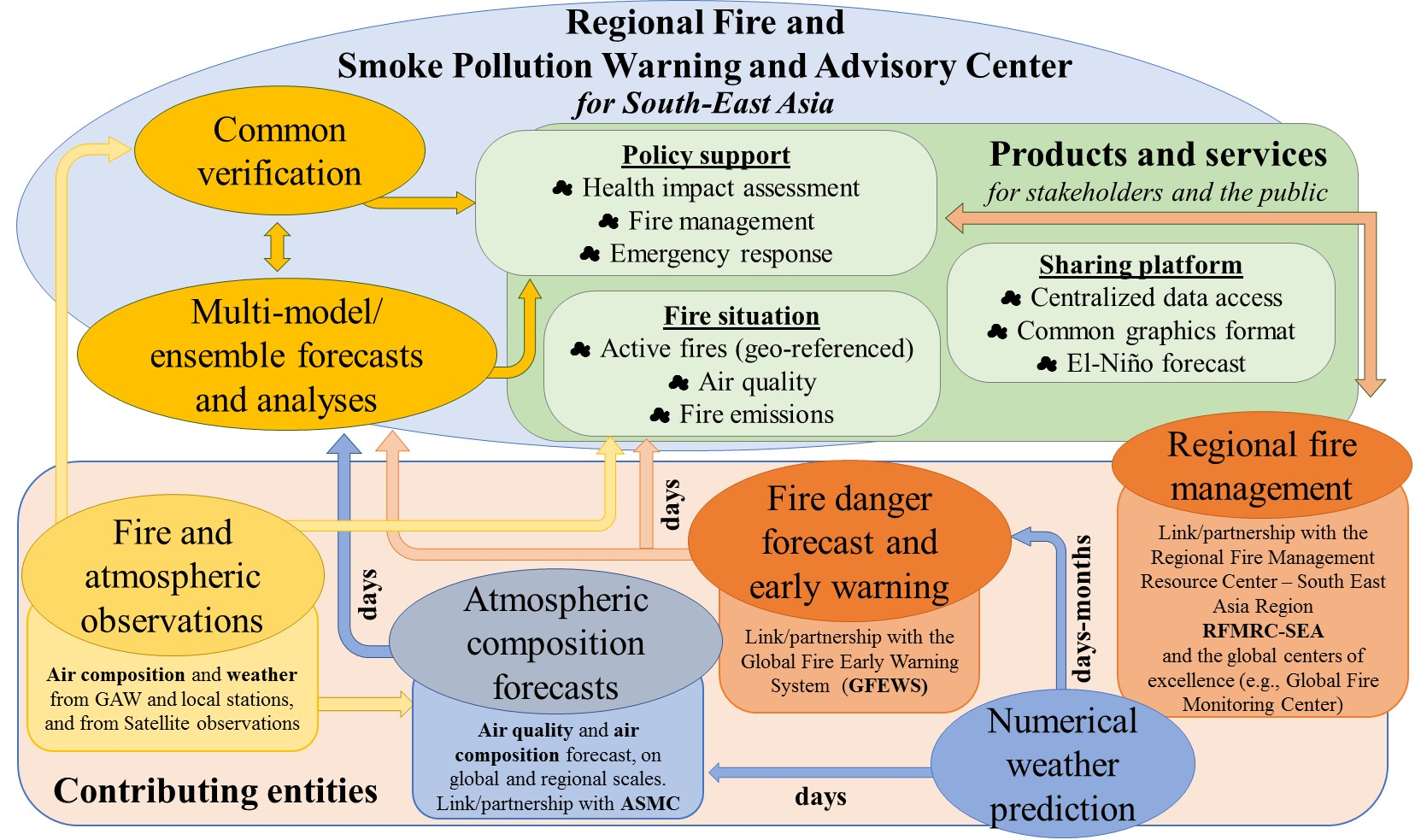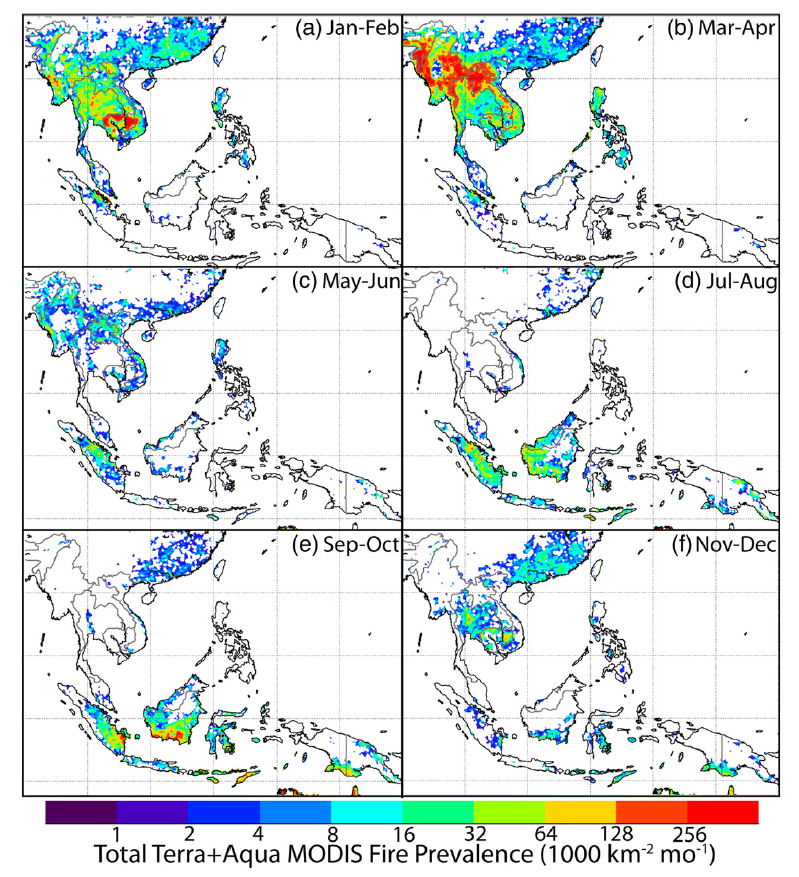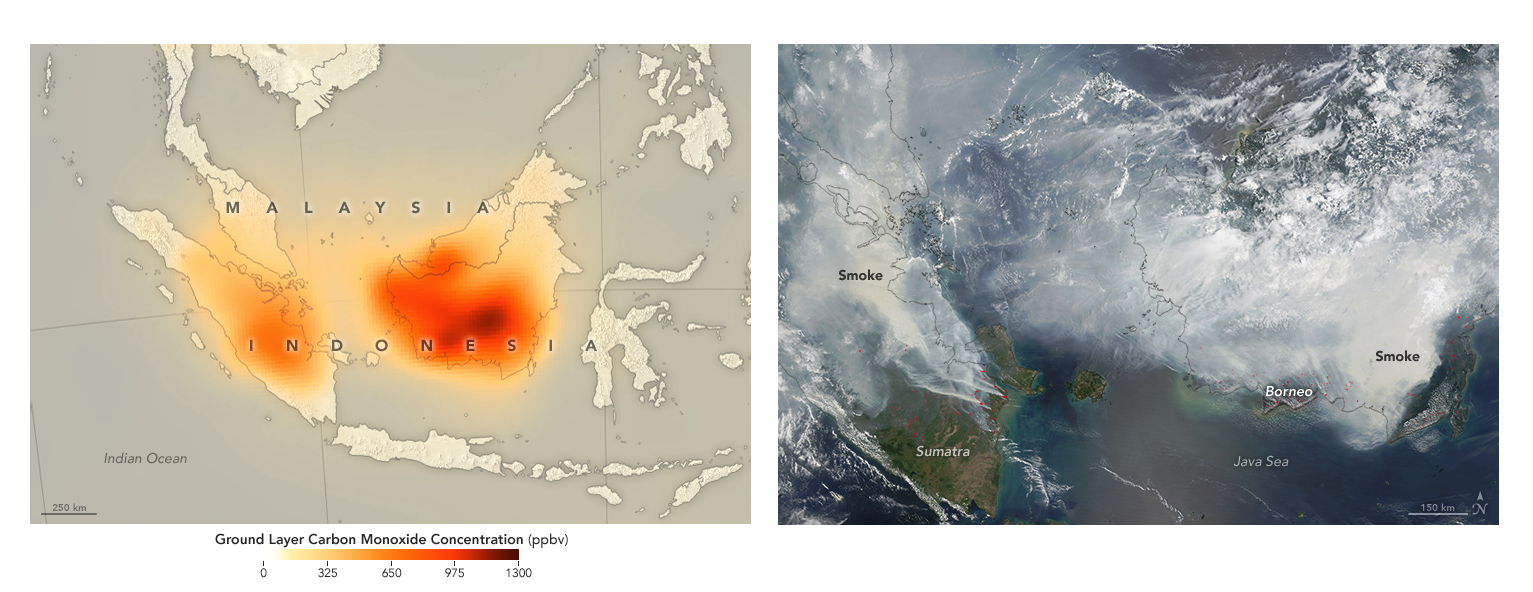About
Fires and Smoke Haze in Southeast Asia
Introduction
Traditional slash-and-burn agriculture during the past millennia has provided livelihood for indigenous forest and rural communities in Southeast Asia, mostly based on traditional principles of sustainability. However, since the beginning of the 20th century, population growth, migration and economic development has resulted in extended conversion of native forests and peatlands to agricultural lands and tree plantations (Goldammer et al., 2018).
The use of fire as the most economic tool for clearing native vegetation has led to ecosystem degradation, environmental damage and smoke pollution affecting human health and the composition of the atmosphere (Field et al., 2009). The periodic recurrence of the El Niño-Southern Oscillation (ENSO) also favours the spread of land fires to uncontrolled wildfires.
First VFSP-WAS Regional Centre
As one of the regions recurrently affected by vegetation fires and smoke pollution, the first Regional Vegetation Fire and Smoke Pollution Warning Advisory and Assessment Centre (VFSP-WAC) was proposed to be established in Southeast Asia. The centre is hosted by the Meteorological Service Singapore (MSS) and could serve as a prototype for other potential regional centres to be established around the world.
Proposed workflow of the Southeast Asia Regional Centre

Climate and fire activity in Southeast Asia
Located close to the equator, fire activity in Southeast Asia is largely influenced by the movement of the Intertropical Convergence Zone (ITCZ). The ITCZ is the major tropical rainbelt and its seasonal migration regulates rainfall patterns in the region. There are two distinct dry seasons during which fire activity is prevalent. During January to April, fires tend to occur in the northern parts of Southeast Asia when the ITCZ is at its southernmost extent. Conversely, during June to October, fires tend to occur in the southern parts of Southeast Asia when the ITCZ is at its northernmost extent.

Bi-monthly MODIS fire prevalence for 2003–2009. (Reid et al., 2013)

TERRA satellite images of carbon monoxide levels and smoke from fires in September 2015. (Image credit: NASA)
References
Field et al., 2009: Human amplification of drought induced biomass burning in Indonesia since 1960, Nature Geoscience, doi:10.1038/NGEO443.
Goldammer et al., 2018. Vegetation Fire and Smoke Pollution Warning and Advisory System (VFSP-WAS): Concept Note and Expert Recommendations. Vol. 235 of GAW Report series. World Meteorological Organization, Geneva, Switzerland. https://library.wmo.int/index.php?lvl=notice_display&id=20244
Reid et al., 2013. Observing and understanding the Southeast Asian aerosol system by remote sensing: An initial review and analysis for the Seven Southeast Asian Studies (7SEAS) program, Atmos. Res., 122, 403–468, doi:10.1016/j.atmosres.2012.06.005.